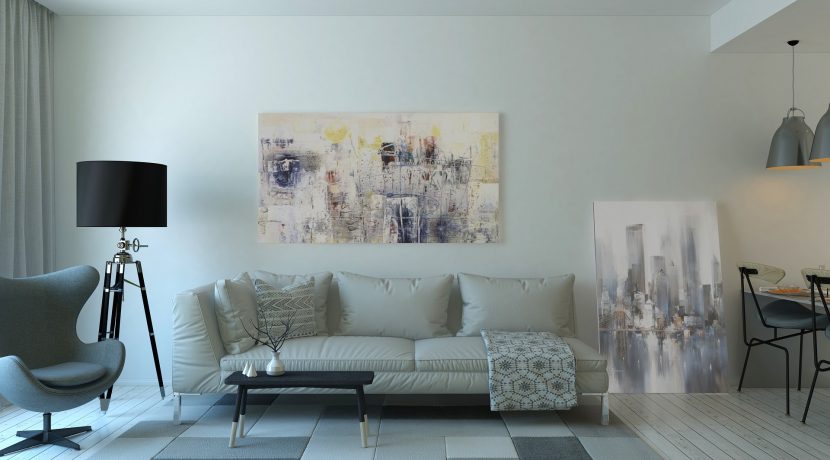How by time living the rent brake is bypassed
In the late summer of 2016, around a year after the introduction of the rental price brake, an outcry went through the German press landscape. “Zeit”, “Süddeutsche”, “Handelsblatt” and others had surprisingly discovered that the makers of the rent brake had been tricked. The combination of furnished rental and temporary living had unexpectedly opened up a business model for some landlords with which they could increase their rental income staggeringly. Two and a half years later it can be stated that the rental market in the metropolises has "tipped". A random sample on Immoscout24 in May 2018 shows the following picture: in Cologne 55% of all apartments offered on the free rental market are now temporary housing, in Hamburg and Berlin it is approx. 50%, in Munich 45% and in Bonn still 38%. The undisputed front runner, however, is our state capital Düsseldorf, where 62% of the entire housing supply is only offered furnished under "Temporary living". In Münster, on the other hand, the tranquil university town, people in Westphalia are more conservative. 94% of all offers in the classic rental market are still placed here, temporary living is almost irrelevant there. These figures do not even include “vacation homes” offered on portals such as Airbnb. If these were added, the temporary housing quota would rise again significantly. With the latter, however, it must be mentioned that many cities have tried to intervene by prohibiting misappropriation, otherwise the number of freely available apartments would be significantly lower.
Offering furnished living space is not a new trend. In the past, surcharges were required for a fitted kitchen or a complete furnishing, only these amounted to a few percent. A short sample on the example of Cologne, however, shows how the rents have gone completely out of hand here. So you will find the small city apartment on Ebertplatz for 59, - € per m² (after all, with sun terrace), two euros less costs an approximately equal apartment in the city center, but without sun terrace. An 2-room apartment in the old town unfortunately has no sun terrace, but a lift, a luxury, which justifies the m² price of 78, - €. These examples are certainly outliers and located at the upper end of the price scale, but it can be seen that the m² prices average on 20, - to 30, - €. Although usually including ancillary costs, these rents are still two to three times higher than the local rent index.
It is noticeable that temporary accommodation offers do not meet any standards or that a regulated price-performance ratio would be recognizable. You can find dark caves with furniture from the last bulky garbage as well as apartments equipped with designer furniture including concierge, cleaning and laundry services, sometimes at similar rental prices. There seem to be pure wild growth and a gold rush atmosphere. Anyone who thinks that the "bad brokers" have their fingers in the game with this business model is mistaken. Various start-ups discovered the trend co-initiated by the rental price brake early on and have the market almost completely under control. Smartly, they have also adjusted their commission model. The landlord does not pay the usual two basic rents for the brokerage, which would be difficult to justify with a temporary housing model, but rather the brokerage portals participate in the monthly rent as a percentage.
How high the occupancy rate of the offered apartments actually is can only be speculated about. Since most clients are likely to be business people and the costs are borne by the companies, the average cost of accommodation in a hotel would have to be used for a comparison. At an overnight stay price of € 90, a monthly hotel stay would be € 2.700 (without hotel discount), for half of this amount you can rent a 50 m² apartment per month. Actually, everyone should be happy: business travelers or tourists find an apartment in a private atmosphere, HR departments are happy about falling accommodation costs, the landlord receives significantly more than the local rent and the start-up as an agent earns generous commissions. Losers are the people who can no longer afford affordable apartments due to the further shortage of living space due to temporary housing offers. Instead of - as the new federal government is probably planning - forcing landlords to disclose previous leases by means of compulsory measures, the screw of temporary living should be turned. Even if this only affects around 13.000 apartments in the twenty largest cities, this would at least be a start.
| Ranking | Cities | Share time living |
| 1 | Düsseldorf | 62% |
| 2 | Stuttgart | 55% |
| 3 | Cologne | 54% |
| 4 | Berlin | 50% |
| 4 | Hamburg | 50% |
| 6 | Munich | 45% |
| 7 | Frankfurt / M. | 41% |
| 8 | Bonn | 38% |
| 9 | Hanover | 36% |
| 10 | Essen | 33% |
| 11 | Nuremberg | 30% |
| 12 | Bremen | 27% |
| 13 | Bochum | 18% |
| 13 | Bielefeld | 18% |
| 15 | Dortmund | 16% |
| 16 | Wuppertal | 11% |
| 17 | Duisburg | 8% |
| 18 | Dresden | 7% |
| 19 | Leipzig | 6% |
| 19 | Münster | 6% |
| Offers Immocout May 2018 |

